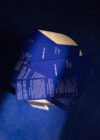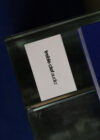Technical
The Science Behind the TCA-M: Chapter Two
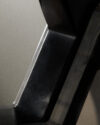
Welcome Back:
Dear Treble Clef Audio Enthusiasts,Welcome back to our "The Science Behind" series, where we delve deep into the fascinating world of audio technology. In this edition, we explore the profound realm of psychoacoustics and its intricate connection to the design of our loudspeakers.
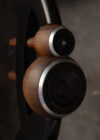
Psychoacoustics, a term as intriguing as it sounds, relates to how we hear and perceive sound. It's a captivating blend of the physiology of our ears and the way our brain interprets auditory information. This field of study plays a pivotal role in shaping the design and performance of our loudspeakers, ensuring that your listening experience is nothing short of extraordinary.
Equal-Loudness Contour: The Sweet Spot of Sound
Ever wondered why certain frequencies in music can seem more pronounced than others? That's the magic of the equal-loudness contour. It's a standard measure that defines what we hear as equally loud, when the frequencies are different. This contour reveals that our hearing sensitivity isn't linear and is highly influenced by sound pressure levels. Our ears are most sensitive to mid-range frequencies, which include the sweet spot for human speech and many musical instruments.
The equal-loudness contour is a key contributing factor to why the design, power and control over loudspeaker low frequency performance is very demanding and essential for reproducing the true character of bass all the way down to enjoying even the lowest note of a pipe organ.
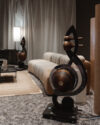
Timbre: The Sonic Signature of Music
Timbre is like the fingerprint of sound, making each instrument or voice unique. It's the intricate mix of fundamental tones and harmonics that we instantly recognise as the sound quality of music and speech. A loudspeaker's role is to faithfully reproduce this composition. If it doesn't, the timbre becomes distorted, and we can spot the difference. Accurate timbre reproduction is vital for an immersive listening experience.
Both the physical shapes and technology solutions of our loudspeakers are key to accurate timbre across the entire human audible range, always equally balanced and beautiful both in and outside the listening space.
Precedence Effect: The First Impression
The Precedence Effect is like a first impression in the world of sound. It suggests that the first sound we hear directly from a source dominates our perception of spatial location, even when there are competing sounds. This temporal masking phenomenon is key to creating a rich and immersive soundstage when we listen to music. However, it's essential to maintain a balance between the direct sound and early reflections from the listening space to create a seamless listening experience. Only when reflected sound is uniform with the direct sound heard up to 30ms earlier, will the subconscious mind integrate the waves as one sound event.
This is another reason why our loudspeakers have natural and organic shapes along with the latest advances in Digital Signal Processing. It ensures the direct and off-axis sound is equally beautiful and dispersed into the listening space in the pattern of natural sound sources.

Head-Related Transfer Function: Unveiled
The Head-Related Transfer Function (HRTF) is a complex process that helps us determine sound source location and timbre. It relies on the timing differences of sounds reaching each ear and involves our head, ears, and body shape. To create a lifelike soundscape, our loudspeakers must ensure exquisitely accurate time coherence and uniformity in reflected sound to support this sophisticated mechanism of human physiology.
Understanding Frequency Bands: The ERB Challenge
The cochlea in our ear acts as a remarkable series of frequency filters, allowing us to distinguish various sounds. These frequency bands, called auditory filters, are the essence of our hearing's resolution. In the lowest bass frequencies, where the TCA-M loudspeaker excels, it's crucial to our perception and emotions that the details from bass are retained in the listning space through reduced sidewall reflections and tackling standing waves.
The TCA-M speaker accomplishes this with excellence, offering a pristine psychoacoustic response even at the very lowest frequencies, where our hearing resolves sounds even just a few Hertz apart.
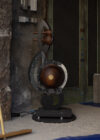
Low-Frequency Perception: More Than Meets the Ear
The art of low-frequency perception goes beyond our hearing. It involves our entire body and senses. Feeling the weight and punch of bass adds depth to music. The TCA-M speaker ensures that you not only hear but also physically sense the profound lows, providing an immersive listening experience. The primary direction cue at low frequencies is the time difference between the two ears. At very low frequencies we perceive these by detecting the time difference between zero-crossings of a pressure wave.
With acoustic instruments played live, instead of perceiving the music as static and in front of the listener, only the immediate attack of the note is in front. The subsequent body of the note seems to be all around drawing listener into the performance. In short – the sound is beautiful.
Often with loudspeakers in a room, low frequencies are not perceived as external and with location, but inside the head. This is because conventional loudspeaker designs, which are fully omnidirectional at low frequencies, tends to pressurise the room to a steady state and thus lack or reduces the dynamics of complex pressure gradients we can perceive, as we would when the same instrument is played live in a room. The subconscious brain not knowing how to localise the initial sounds of instrument attacks, will perceive them as internal. Music reproduced from loudspeakers with this property is so common that we have come to accept it as inevitable, perhaps even desirable. But it is far from authentic, and it is not as involving as say, a live trio might be in the same room.
Preserving pressure gradients at low frequencies is an essential design consideration for achieving the true and of beautiful nature of bass.
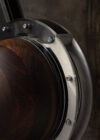
In essence, the Treble Clef Audio experience is a full body phenomenon that we pride ourselves on, and we want to share it with the world.
If you are interested in experiencing the sound for yourself, please don’t hesitate to reach out to organise a Private Listening Session at the TCA HQ, or secure a place on our invite list for coming events, to be announced.
In the upcoming chapter on The Science Behind, we'll explore the challenges of reproducing the true character of bass. Stay tuned for more insights into audio perfection, and thank you for joining us on this captivating journey into the heart of sound.
Meanwhile, you can download our White Paper to explore the detail.
Sincerely,
Treble Clef Audio®
